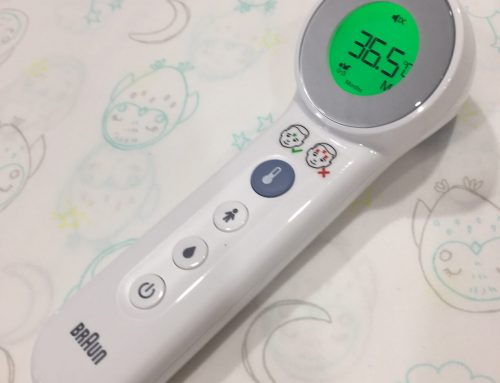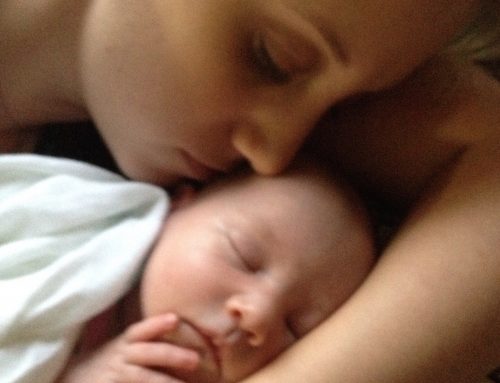It used to be called ‘Congenital Dislocation of the Hip’ (CDH). Nowadays it is now called ‘Developmental Dysplasia of the Hip’ (DDH), because we realise there are some babies who examine normally at birth, but over the early months of life develop an abnormal hip joint, whose socket becomes flattened and unstable. This latter group is caused by an inborn genetic factor or inappropriate posturing of the legs over the first months (See last paragraph).
For the first year a baby’s hip joint is mostly made of cartilage, which is mouldable. Beyond one year of age it turns to bone, which is not. We therefore wish to diagnose dysplasia while the joint is still cartilage so treatment can fix it completely. If treatment is delayed until after the joint turns to bone such treatment is never completely satisfactory. The joint usually remains abnormal and the patient may end up with a limp or, at the least, develop early osteoarthritis requiring a hip replacement in early adult life.
It’s an problem that can develop as babies’ hips mature, the hip joint socket is meant to deepen in the first year or so, as it also turns to bone (from being soft cartilage). The deepening process is on-going and it can be interfered with.
There is a suggestions that that is happening from tight sleeping bags where the baby’s legs are extended out and wrapped firmly over these months. Swaddling is OK as long as the hips are FLEXED; and babies prefer that flexed posture too – as it reminds them of their position in the womb.
So: If your baby has used one of those bags or there’s been tight swaddling with stretched out legs: see your doctor for a hip check on the baby. It can be sorted out as long as it’s picked up in the first year- and the sooner the better.










Hey Howard,
I am an avid fan.
My little first born girl was breech, and thus they have been monitoring her for dysplasia. At three months she looked fine, and then the xray at 6 months said she was borderline, but still no need for a brace. We are going in for another check in a few weeks (9 months)
Just wondering what the treatment would be at 9 months as she is starting to crawl and would be a very unhappy girl if she were to be braced the whole time.
Hi Hannah, It’s not likely she’s going to need bracing – she probably has ‘acetabular angles’ (ire the steepness of the roof of the socket) at the higher end of normal and just want to see that it reduces at an appropriate rate so is ready for her walking. Occasionally the development of the socket is too slow and then they would use a ‘correctio’ splint. Not much fun but well tolerated by the little ones. But as I say, only an outside chance or they would have acted sooner.
Hi Howard,
I have found your posts about hip dysphasia really interesting. My baby is 8 weeks old. I had heard about the issues with some baby carriers previously, but am now reflecting on sleeping practices. We have been taught to wrap our baby, and then tuck her in tightly with a sheet to prevent her from rolling in line with the SIDS guidelines. Reading your blog though I am wondering if this will increase the risk to the hips as it tends to hold the legs out. What position and type of covering/ tucking in do you recommend?
Emma
It’s good to tuck the baby in but that should be mostly for the UPPER body. The legs should have some freedom to flex and splay a little. Let’s face it in the womb (about which the baby would like to be reminded) the legs are flexed into the tummy.
My baby is 4 months now and has been in her harness for almost a month. She appears to be ready to start eating rice cereal but everything I’ve read says they should be almost sitting on their own….she can’t almost sit on her own because of her harness….can I still feed her?
Of course feed her if she is enthusiastic. The harness is irrelevant. I don’t know where you got the idea that they have to be almost sitting. It’s just that developmentally they occur together. Coincidence!
Hi I’m Zoe l’m 11. when I was five my mom and teacher had figured out that I had hip dysplasia it wasn’t found when I was a baby so in kindergarten I had to go do a hip surgery I was in a wheelchair for a while and Walker and then In second grade I had to get the plate out another surgery and I’m just 11 years old.
Hi Zoe, Sorry to hear about your hip issue. Unfortunately it’s sometimes literally impossible to detect hip dysplasia in babies and it only becomes obvious later on. That’s why it’s no longer called ‘congenital dislocation’ because sometimes there is no dislocation at all – just the hip joint doesn’t develop properly. Hope you’re up and running soon!
Hi??????????????????????????????????????????☺️☺️????????????????????????????????
Hi,
I’ve just had an X-ray done in my 8 month olds hips and it’s come back that she is just on the borderline.
I’ve got a specialist appointment on Friday but feeling a bit nervous. She’s got an extra crease near where her nappy sits also which I’ve hear can contribute.
Just wondering if u have any inside into what would be the next step.
Thank u
Borderline means just that. There is a ‘bell-curve’ statistical distribution regarding the angle of the roof of the hip socket. If your baby has an angle that is away from the average it means that it should be followed closely to see that it does not deviate more in the next few months. Most do not. The process of deepening the socket and making it more and more stable is developmental and the first year is critical so we are very careful during this time. The extra crease is not important in your case. It’s only important if the hip dysplasia was so severe that the leg has been shortened, which definitely your baby’s hasn’t – or it would not be ‘borderline’. Don’t worry too much I see a lot of these and they do need following up, but most sort themselves out.
Hi, I’m 38 years old (born in 1977). When I was born I had congenital hip dysplasia , my Mother told me that she ignored the treatment harness given to her for me and just applied two cloth nappies instead (as was done in her early nursing career). That is all the treatment I have had. That I can recall it was never checked or looked at again during my childhood. I have always had what I would describe as an Ëxtra bum cheek below my right, it embarrasses me, Ive never worn a swimsuit without a pair of shorts over the top since I was about 13 and first really noticed ït” back there as unsightly lumpy and an extra crease even though I was skinny. My right leg is only about 1cm shorter than my left according to my Chiropractors Xrays and calculations, and am not sure if this difference is within a normal range or if this shorter leg is related to the hip dysplasia. Until now, this problem in terms of my health hasn’t really caused me much pain or other issues, though during pregnancy I was in pain from week 20 onwards in the R hip and coccyx probably from the twist in my pelvis due the shorter leg (noticed also when wearing jeans the rear seam in the seat does not line up with centre of my body), though it was never discussed beyond the nurse at the hospital check ups she assured me that any pain was normal due to extra weight, though it was eye watering for me at times. Recently in the last year or so I’ve gradually become aware that I’ve been in pain in the thigh and hip area more and more so, so much so lately I’ve been finding myself reaching out for something to grab hold of when my leg gives out from under me while walking due to pain, and even sitting I feel a constant tension and twinging low level of pain in that area and down the top of my thigh. (I stopped seeing a chiro about 6 months ago) I googled dysplasia recently to see if this pain I’ve been experiencing could be related to that, I had no idea really about it as my Mother had assured me it was “treated” with the nappies when I was a baby and I was fine, end of story. I’ve been finding that the pain from my hip is making me tense and this is leading to headaches as well. I’ve been taking Panadol when I get the tension headaches only. I’m thinking about talking to my GP about this pain but don’t know if I should mention the deformity as Mum said its treated, is it possible the pain I am feeling is actually from this deformity or from something else entirely like a pulled muscle etc that is taking a long time to heal up? I don’t want to waste anyone’s time or resources on this if its likely just a something minor, I am a wuss when it comes to pain I guess for scale the pain I am experiencing to me is no worse than a toothache except sometimes when I am walking and my leg sort of stops bearing my weight and I nearly topple over, grab or reach out for something to balance myself. Thanks.
Hi Alison, Where do you live? Are you in Australia? I would definitely suggest you get a hip Xray and take these images and see an orthopaedic surgeon. This is not chiropractor territory. It could well be that this is related to dysplasia. Double nappies is usually not enough if the dysplasia is significant. Write to me on hchilton@babydoc.com.au.
Hi Howard, Yes I am in QLD. I will ask my GP for a form for a hip x-ray next time I see her, and if there is any abnormality on the report returned, get a referral to an orthopaedic Dr. Thank you, for your reply. I really hope to avoid any kind of surgery at all, so fingers crossed its nothing serious.
Hi, my daughter has hip dysplasia inked up at 4 months by x-ray. Was in a harness for 11 weeks and her hip socket starting to curve as they would like. Back in July for follow up x-ray to monitor. Just wandering are grow bags (baby sleeping bags) bad for babies with hip dysplasia?
The sleeping bags that are potentially harmful are ones so tight that the legs are forced to straighten out. This pulls the head of the femur (leg bone) out of the hip socket. It is the pressure of this femur head into the socket that deepens and forms the correct socket shape. Big roomy sleeping bags are fine.
My 6 month old daughter had routine X-rays as she was breech following normal ultrasound at 12 weeks and all other checks appearing normal. The angle of her right hip was 19.5 and her left was 25. The orthopaedic dr recommended a rhino brace for 3 months but some research I have been doing seems to have these angles in the ‘normal’ or boarder line limits. Is this the right treatment at this age?
I would believe your orthopaedic surgeon if she or he recommends a splint. There is more to this than measuring the angles!
Hi i just wanted to know if physiotherapy can help with mild dysplasia in a 3 month old
No. Physiotherapy has no place in the management of DDH except perhaps education about positioning when carried.